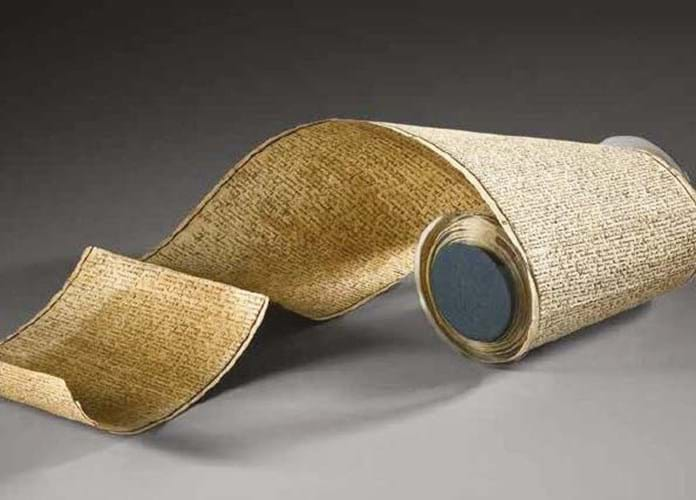
The purchase was assisted by funding from wealthy individuals who contributed via a tax scheme set up by the French government.
French state buys €4m Marquis de Sade’s ‘120 days of Sodom’ manuscript with help from a wealthy banker
France’s Ministry of Culture has announced the acquisition by the state of ‘120 days of Sodom’ by the Marquis de Sade and a number of other manuscripts.
The purchase was assisted by funding from wealthy individuals who contributed via a tax scheme set up by the French government.
Emmanuel Boussard, an investor and former investment banker, funded the €4m purchase of the de Sade manuscript.
The other items purchased include a set of autograph manuscripts by André Breton, including the two Manifestos of surrealism.
The collection is to become part of the National Library of France (The Bibilotheque Nationale de France - BNF) with the de Sade manuscript joining the BNF's Arsenal library.
National treasures
The manuscripts were previously declared national treasures by the government and were withdrawn from a planned auction in December 2017.
They were part of a huge haul of works from defunct manuscript investment scheme Aristophil.
Auction house Aguttes in France had planned to offer them in its first Aristophil auction on December 20, 2017.
The government then had 30 months to raise the funds to make the purchase before the export block expired.
The original 39ft (11.9m)-long manuscript of 120 Days of Sodom had been estimated at €4m-6m. Breton’s handwritten Manifeste du Surrealisme – his definition of the movement – was estimated at €4.5m-5.5m ahead of the auction.
The government’s call for funding was assisted by the BNF.
Major donors
Chairman Jean-Claude Meyer and The Cercle de la BNF and its patrons raised awareness among major donors of the library of the tax scheme for the acquisition of national treasures.
Boussard was among those who responded.
According to the Ministry of Culture, Boussard “wanted to demonstrate his particular attachment to the Arsenal library [close to the Bastille, this library is now part of the BNF], where his grandfather held the position of curator between 1943 and 1964” and where the manuscript will now go on show.
The acquisition of Breton's manuscripts was joint funded by Jean-Claude Meyer, Alain Minc, the Fondation Khôra - Institut de France, and Italian newspaper publisher Carlo Perrone.
Perrone was happy to see Sade's manuscript purchased as it had once belonged to his grandparents Charles and Marie-Laure de Noailles.
Sade wrote the controversial story in 37 days in 1785 in the Bastille, where he had been imprisoned. Days before the storming of the Bastille on July 14, 1789, Sade was transferred and he hid the manuscript in a stone wall. The tiny handwriting on sheets of paper have been attached as a single 39-foot-long roll. It was later recovered, sold, resold and then published for the first time by a German doctor in 1904.
In 1929 Viscount Charles de Noailles, whose wife, Marie-Laure, was a direct descendant of Sade’s, bought the manuscript.
It later became part of the Aristophil investment scheme.
A total of 54 different collections were formed, with nearly 18,000 investors and contracts totalling €700m, before Aristophil and its subsidiaries were declared bankrupt in 2015.





